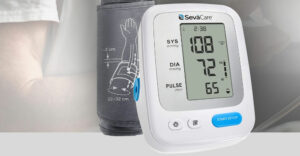
They’re building people out of 3D printers now — parts, anyway. LayerWise announced Sunday that it has applied a process called “additive manufacturing” to produce a titanium total lower jaw implant for facial reconstruction. The project was developed in collaboration with partners from medical industries and academia.
This is the first complete patient-specific implant for the lower jaw. The complex implant design incorporates articulated joints and dedicated features. The implant restored a patient’s facial aesthetics and allowed her to regain her speech within hours.
The printer uses a high-precision laser to selectively heat metal powder particles that fully melt to adhere to the next layer without using glue or binder liquid. The additive manufacturing prints functional implant shapes that could be very difficult to produce using standard metalworking processes.
The implant was awarded the 2012 additive manufacturing award by the Additive Manufacturing Network in Belgium due to the fact that additive manufacturing played the main role in the realization of this new technology.
Medical Field Breakthrough
This advancement in the field of implant reconstruction goes beyond facial surgery. The technology could change the way all implants are designed and produced.
“This is a real breakthrough, exhibiting the possibilities of additive manufacturing in the field of medicine,” Peter Mercelis, Ph.D., managing director of LayerWise, told TechNewsWorld. “Not only are patient-specific implants possible, but the technology can also be applied for serial manufacturing of implants. Applications of additive manufacturing and 3D printing are not limited to facial surgery, but also orthopedic surgery and traumatology may benefit from this technology.”
These methods will become more common as more people become aware of the benefits, suggested Mercelis.
“It is now very new, but when awareness grows, also the acceptance of this technology will follow,” he said. “This kind of technology was originally developed as a prototyping technique, but we successfully used our additive manufacturing technology to make fully functional components instead of prototypes. “
Price Will Go Down
The medical industry will recognize the benefits of the patient-specific implant, Mercelis predicted, including reduced operation time, faster recovery, better long-term outcomes, and better functionality for patients.
“Of course, a broad acceptance will also allow the technology to become cheaper,” he said.
Body Parts Just for You
Implants using additive manufacturing allow new possibilities and are easier for the body to adapt to due to the detail that doctors are able to put into the individual pieces.
“We already use the technology on a large scale for patient-specific dental prostheses through our dental division, DentWise,” said Mercelis. “Biocompatible implants may be designed with integrated porosities to allow the natural bone of the patient to really grow inside the implant to allow for improved fixation of the implant. This offers many new possibilities; one can integrate drugs that promote bone formation.”
In the future, combinations of titanium implants and biodegradable 3D printed structures may be used, Mercelis added.
The Future: Growing Our Own Bones
This revolutionary step in mandibular treatment was developed under the supervision of Jules Poukens, professor in medical engineering at University Hasselt Belgium and cranio-maxillofacial surgeon at Orbis Medical Center.
“The combination of additive manufacturing and tissue engineering can result in real organ printing,” Poukens told TechNewsWorld. “In this case, bone is the organ.”
Further research involving the combination of 3D printing with human tissue will be carried out in cooperation with the research institute Sirris. “3D printed resorbable scaffolds can be combined with stem cells from the patient in order to create a viable implant without the need to harvest large bone transplants from the patient,” said Poukens.





















































